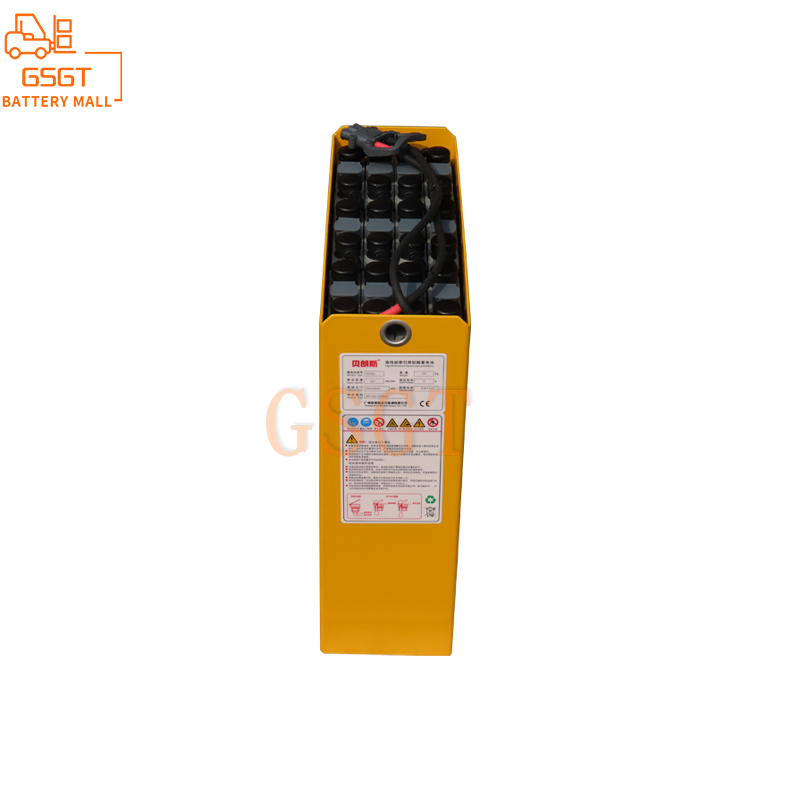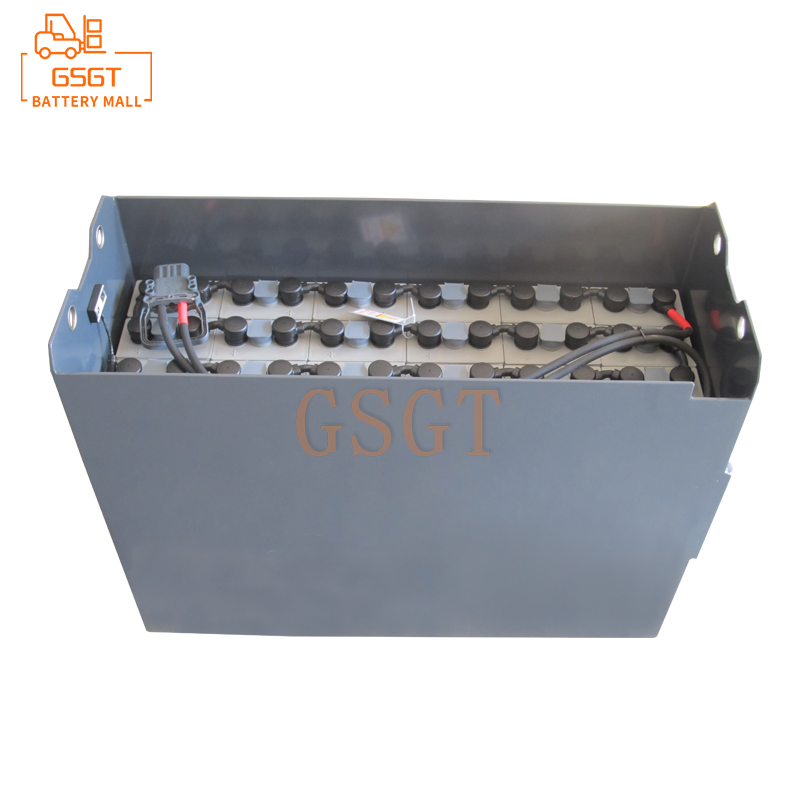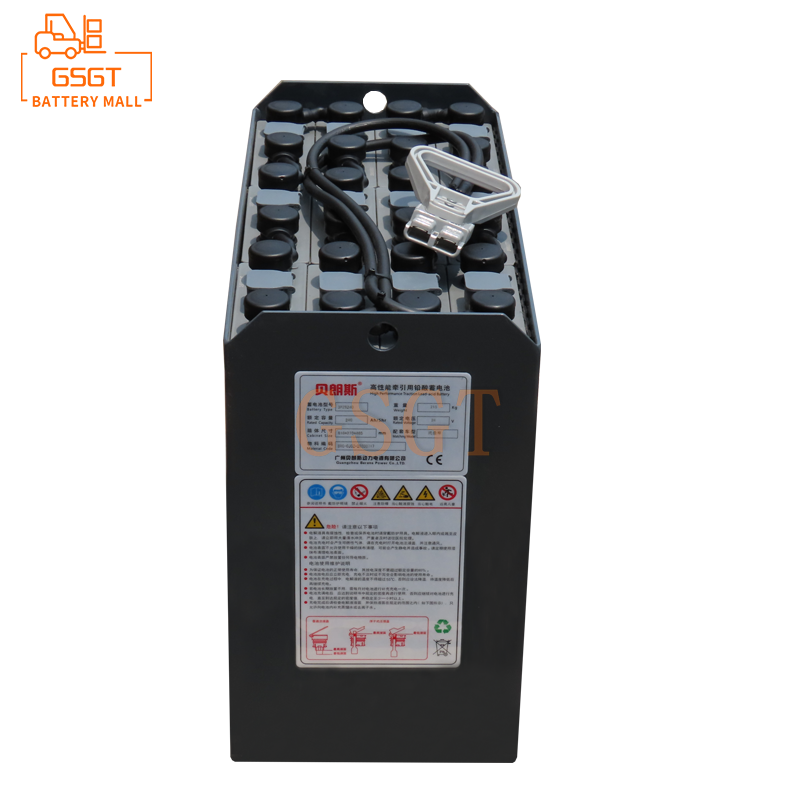Time:2025-03-22 10:40:37
Browse:710
In the field of logistics warehousing, lead-acid batteries are commonly used as energy storage equipment, and their performance is directly related to the operating efficiency and cost of various storage equipment. Among them, the cycle life and instantaneous discharge capacity are two key indicators, how to achieve the balance between the two in the selection is an important link to ensure the smooth progress of storage operations.
Review of basic characteristics of lead-acid batteries
The lead acid battery is mainly made of lead and its oxide electrode, and the electrolyte is named for sulfuric acid solution. In the discharge state, the main component of the positive electrode is lead dioxide, and the main component of the negative electrode is lead. In the charging state, the main components of the positive and negative electrodes become lead sulfate. The structure usually includes a tubular positive plate, a negative plate, an electrolyte, a separator, a battery tank, a battery cover, a pole, a liquid injection cover, etc. Lead-acid batteries have the advantages of stable voltage and relatively low price, which is one of the reasons why they are widely used in logistics warehousing scenarios. However, it also has the disadvantage of low specific energy (that is, less electrical energy is stored per kilogram of battery).
Cycle life: The key to long-term cost
◆ Definition and importance of cycle life
Cycle life refers to the lead-acid battery under certain conditions, from full charge to full discharge, and then to full charge of a complete process, so repeated times is the cycle life. In logistics warehousing, frequently used electric forklifts, stackers and other equipment, the cycle life of the battery directly affects the replacement cycle and operating costs of the equipment. For example, if a battery cycle life is 1000 times, and a storage device uses a charge and discharge cycle every day, the battery can theoretically be used for about 1000 days, after which its performance may be significantly reduced and a new battery needs to be replaced.
◆ Factors affecting cycle life
● Depth of discharge (DOD) : The depth of discharge is one of the key factors affecting the cycle life of lead-acid batteries. Deep discharge (high DOD) will accelerate the vulcanization of the battery plate and shorten the battery life. For example, discharging a battery to a depth of 80% will significantly reduce its cycle life compared to discharging it to a depth of 50%. In logistics warehousing, excessive discharge of equipment should be avoided as far as possible, and the power alarm system can be set to remind the operator to charge in time when the power is below a certain threshold (such as 30%).
● Charging method: Improper charging method can also damage the battery cycle life. Overcharge will cause the battery to heat up, accelerate electrolyte water loss and plate corrosion; Undercharging will vulcanize the battery plate. Intelligent charging equipment is used to adjust the charging current and voltage according to the real-time state of the battery, which can effectively extend the cycle life of the battery. For example, the three-stage charging method is used to first charge with high current and constant current, when the voltage reaches a certain value, it is converted to constant voltage charging, and finally, trickle charging is carried out to ensure that the battery is full and not charged.
● Working temperature: The best working temperature of the lead-acid battery is about 25℃. The temperature is too high, the chemical reaction inside the battery is accelerated, the electrolyte evaporation is intensified, the plate corrosion is accelerated, and the cycle life is shortened; If the temperature is too low, the internal resistance of the battery increases, the capacity decreases, and the cycle life will also be affected. In the storage environment, the battery operating environment temperature can be controlled within the appropriate range by installing air conditioning or ventilation equipment.
Instantaneous discharge capacity: meet the instantaneous power requirements of the equipment
◆ The role of instantaneous discharge capacity
Equipment in logistics warehousing, such as electric forklifts when starting, accelerating, and carrying heavy objects, and stackers when rapidly lifting and lowering goods, all require batteries to provide powerful instantaneous discharge current to meet the instantaneous high power needs of equipment. If the instantaneous discharge capacity of the battery is insufficient, the equipment may have problems such as slow start and insufficient power, which seriously affects the efficiency of storage operations.
◆ Factors affecting instantaneous discharge capacity
● Plate design: The structure and material of the plate have an important effect on the instantaneous discharge capacity. The larger the cross-sectional area and the thinner the thickness of the plate, the shorter the electron conduction path, the smaller the resistance, and the greater the instantaneous discharge current that can be provided. For example, the use of radial bar design plate, can effectively improve the high current discharge performance.
● Electrolyte characteristics: The density and conductivity of the electrolyte also affect the instantaneous discharge capacity. Higher electrolyte density can improve the electromotive force of the battery, but too high may accelerate plate corrosion. At the same time, good electrical conductivity helps to conduct current quickly and improve instantaneous discharge ability. In the selection, the characteristics of the electrolyte should be considered comprehensively, and the battery suitable for the working conditions of the storage equipment should be selected.
● Battery internal resistance: Battery internal resistance is one of the key factors affecting the instantaneous discharge ability. The smaller the internal resistance, the smaller the loss when the current passes through, and the greater the instantaneous discharge current that can be provided. The internal resistance of the battery can be reduced by selecting high-quality partitions and adopting reasonable assembly processes.
Balancing strategy: Tradeoff between cycle life and transient discharge
◆ According to the type of equipment selection
Different logistics storage equipment has different requirements for the cycle life and instantaneous discharge capacity of lead-acid batteries. For electric forklifts with high frequency of use and long working time, priority should be given to batteries with long cycle life to reduce long-term use costs; For some equipment with high requirements for instantaneous explosive power, such as forklifts for emergency heavy lifting, more attention needs to be paid to instantaneous discharge capacity. During the actual selection, you can understand the specific battery performance requirements of the device according to the operating instructions of the device or consult the device manufacturer.
◆ Capacity allocation optimization
Reasonable configuration of battery capacity can also achieve the balance between cycle life and instantaneous discharge capacity to a certain extent. If the battery capacity is too large, although the instantaneous discharge capacity may be guaranteed, it will increase the cost, and it may not give full play to its advantages on some devices, and may affect the cycle life due to long-term shallow charging and shallow discharge; If the capacity is too small, the device may not be able to meet the needs of the work, and frequent deep discharges will shorten the battery life. Therefore, it is necessary to accurately calculate the required battery capacity according to the power of the device, working time, frequency of use and other factors. For example, for an electric forklift with a power of 5kW and working for 8 hours a day, the appropriate capacity of the battery can be selected according to its operating current and the expected depth of discharge.
◆ Maintenance and management policies
Good maintenance and management is essential to balance cycle life and transient discharge capacity. Periodically check and maintain the battery, including checking the electrolyte level and specific gravity, cleaning the battery surface, and detecting the internal resistance of the battery, so as to find and deal with potential problems in a timely manner, which can extend the cycle life of the battery and maintain its good instantaneous discharge performance. In addition, the development of a reasonable battery use system, such as avoiding excessive discharge, controlling charging time and temperature, also helps to achieve a balance between the two.
In logistics warehousing scenarios, the cycle life and instantaneous discharge capacity of lead-acid batteries must be considered. Through in-depth understanding of battery characteristics, influencing factors and adopting a reasonable balance strategy, lead-acid batteries with excellent performance and cost-effective can be selected for storage equipment, thereby improving storage efficiency and reducing operating costs.

$3810

$1270

$2040

$850

MESSAGE
Professional And Efficient
Security
Affordable Price
Professional Services